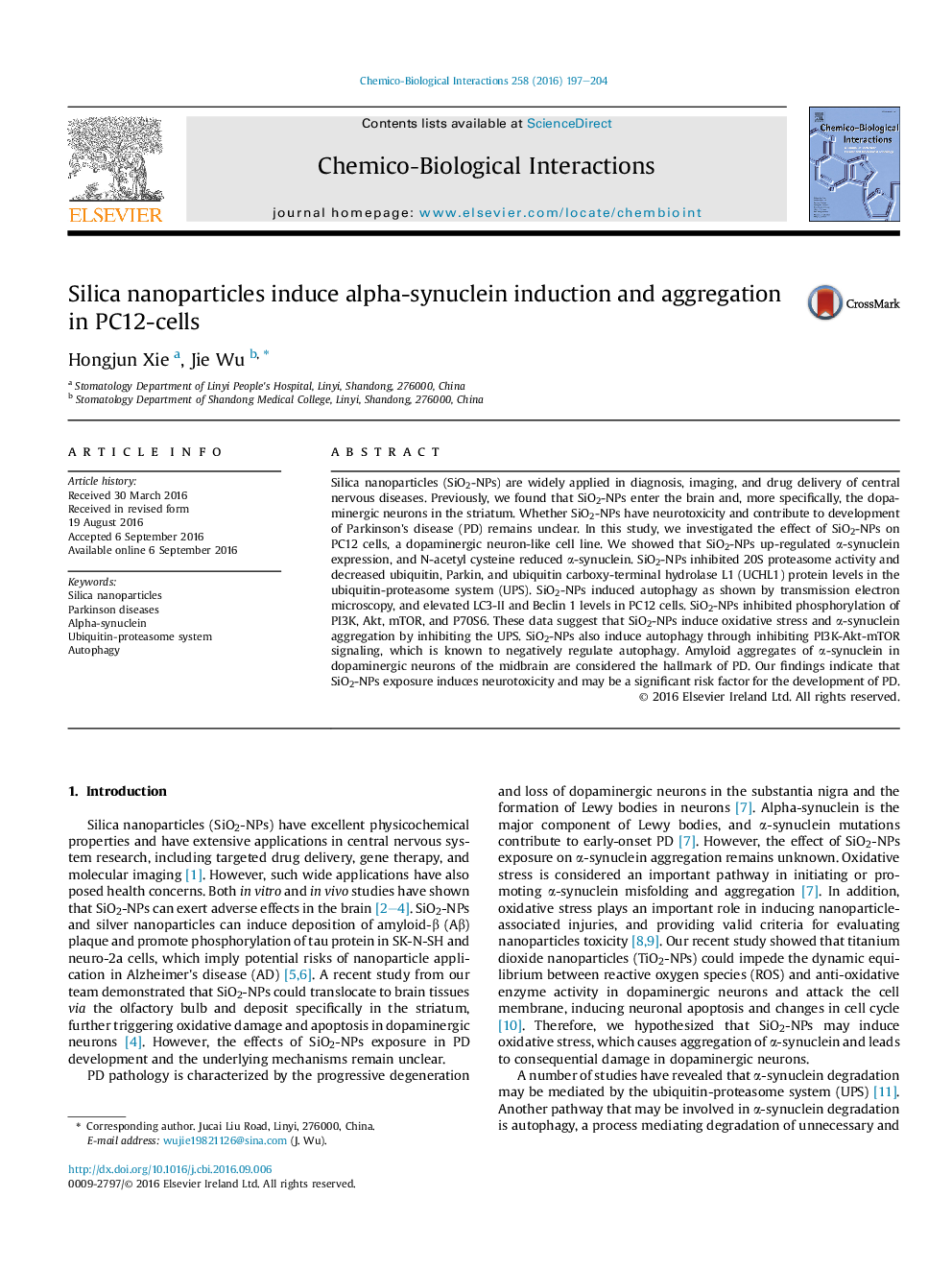| Article ID | Journal | Published Year | Pages | File Type |
|---|---|---|---|---|
| 2579760 | Chemico-Biological Interactions | 2016 | 8 Pages |
•Silica nanoparticles induced aggregation of α-synuclein in dopaminergic neuron-like PC12 cells.•Silica nanoparticles impaired the ubiquitin-proteasome system and induced autophagy.•Silica nanoparticles induced neurotoxicity and contribute to development of Parkinson diseases.
Silica nanoparticles (SiO2-NPs) are widely applied in diagnosis, imaging, and drug delivery of central nervous diseases. Previously, we found that SiO2-NPs enter the brain and, more specifically, the dopaminergic neurons in the striatum. Whether SiO2-NPs have neurotoxicity and contribute to development of Parkinson's disease (PD) remains unclear. In this study, we investigated the effect of SiO2-NPs on PC12 cells, a dopaminergic neuron-like cell line. We showed that SiO2-NPs up-regulated α-synuclein expression, and N-acetyl cysteine reduced α-synuclein. SiO2-NPs inhibited 20S proteasome activity and decreased ubiquitin, Parkin, and ubiquitin carboxy-terminal hydrolase L1 (UCHL1) protein levels in the ubiquitin-proteasome system (UPS). SiO2-NPs induced autophagy as shown by transmission electron microscopy, and elevated LC3-II and Beclin 1 levels in PC12 cells. SiO2-NPs inhibited phosphorylation of PI3K, Akt, mTOR, and P70S6. These data suggest that SiO2-NPs induce oxidative stress and α-synuclein aggregation by inhibiting the UPS. SiO2-NPs also induce autophagy through inhibiting PI3K-Akt-mTOR signaling, which is known to negatively regulate autophagy. Amyloid aggregates of α-synuclein in dopaminergic neurons of the midbrain are considered the hallmark of PD. Our findings indicate that SiO2-NPs exposure induces neurotoxicity and may be a significant risk factor for the development of PD.
